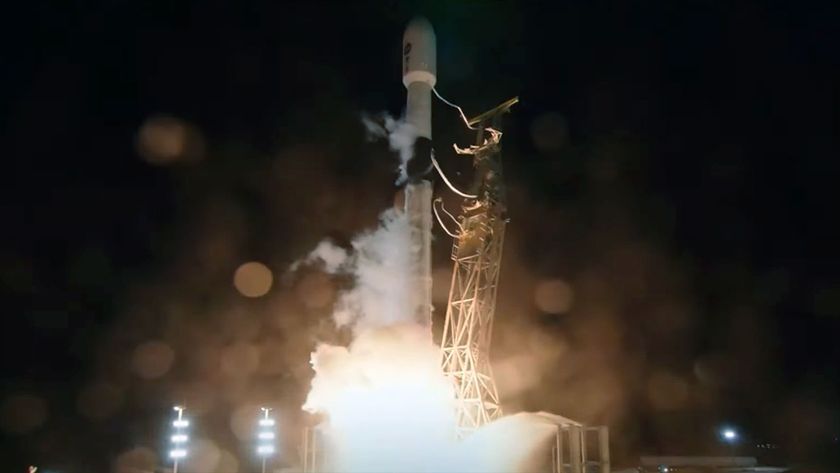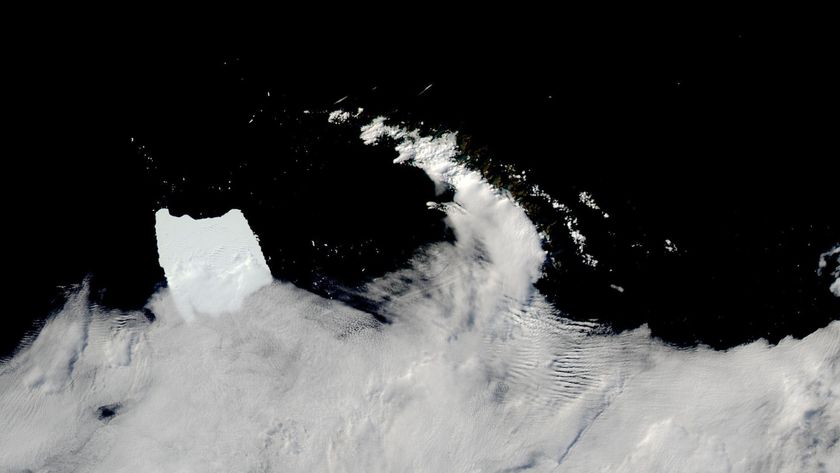Asteroid-Capture Mission Will Bring Mars Within Reach, NASA Chief Says
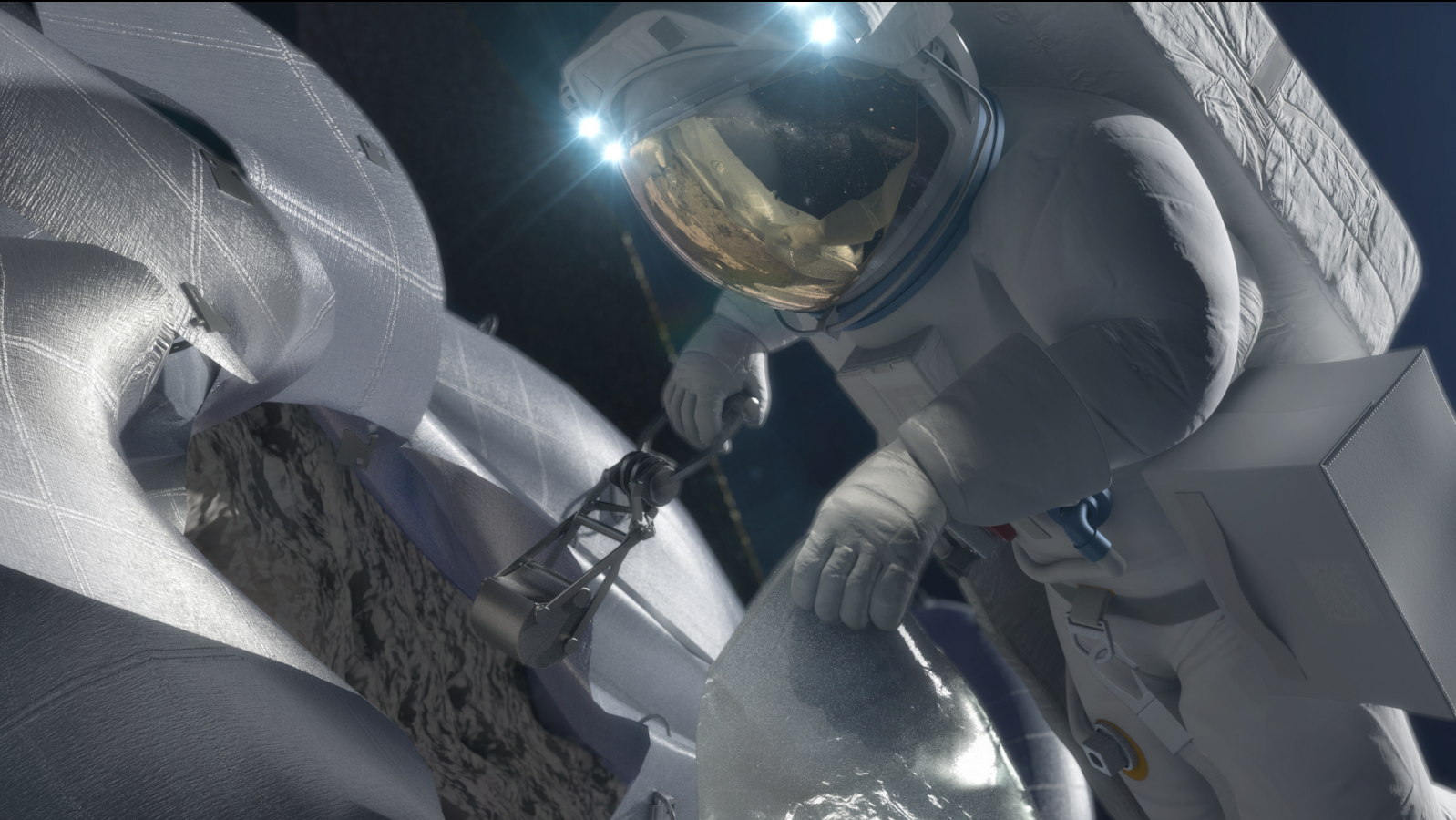
NASA's wild plan to capture an asteroid and park it near the moon is only one step on the way to Mars, NASA chief Charles Bolden said Wednesday (March 26).
The space agency is planning an ambitious mission to send a robotic spacecraft to an asteroid, bag the space rock and bring it into orbit around the moon. While the asteroid-capture mission may sound like a huge task in its own right, Bolden thinks that it's only one leap toward a larger mission. The space agency should be focused on getting humans to Mars and establishing a presence on the Red Planet for years to come, Bolden said.
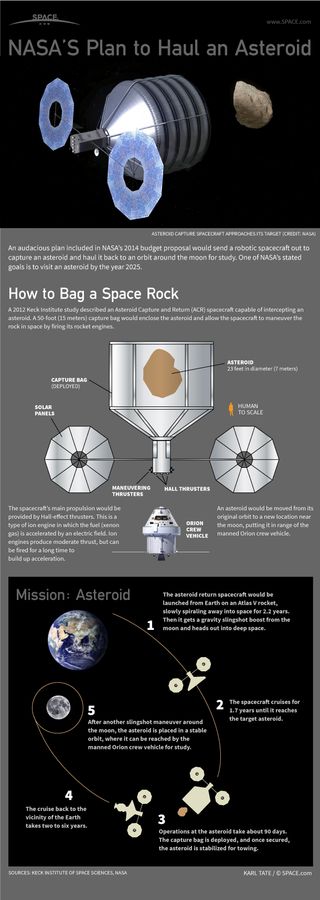
Though it might not be the ultimate goal, the asteroid redirect mission is still an important step that can be used to test propulsion systems and other technology that could help humans get to Mars. The asteroid mission may also be a good way to gather more information about the early solar system and develop asteroid mining techniques, advocates of the mission have said.
"We really make a big deal out of this [asteroid] initiative, but you should all understand, this is a tiny, tiny piece of getting humans to Mars," Bolden said. "I don't want anybody to lose focus on that. The ultimate goal of this agency right now when it comes to human spaceflight is to put humans on Mars. That's hard. That is really hard. We need a proving ground to develop some of the technologies and everything else."
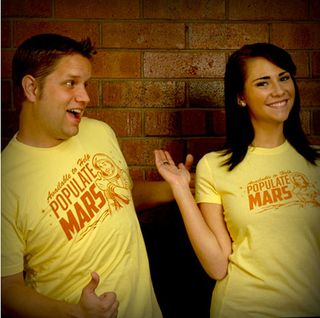
That proving ground could be the asteroid capture mission. So far, NASA scientists have identified some promising asteroids that could potentially be captured and dragged into a stable orbit around the moon. NASA would launch a robotic mission to retrieve the chosen space rock and tow it into lunar orbit, where astronauts could visit and sample the asteroid by 2025.
Engineers are looking into two different ideas for how the retrieval mission would work. In one mission, the robotic spacecraft would visit a large asteroid and pluck a boulder off of it, bringing it back to lunar orbit. In the other, NASA would target a small asteroid that could be lassoed and deposited in a stable orbit. Scientists have now identified about six target asteroids for each of the missions.
NASA officials hope to us the Orion capsule and Space Launch System rocket — both designed to take humans farther into space than ever before — to launch crews to the asteroid. The new rocket and capsule are slated to fly crews together for the first time in 2021. Orion is scheduled to make a test flight later this year.
Get the Space.com Newsletter
Breaking space news, the latest updates on rocket launches, skywatching events and more!
Follow Miriam Kramer @mirikramer and Google+. Follow us @Spacedotcom, Facebook and Google+. Original article on Space.com.
Join our Space Forums to keep talking space on the latest missions, night sky and more! And if you have a news tip, correction or comment, let us know at: community@space.com.

Miriam Kramer joined Space.com as a Staff Writer in December 2012. Since then, she has floated in weightlessness on a zero-gravity flight, felt the pull of 4-Gs in a trainer aircraft and watched rockets soar into space from Florida and Virginia. She also served as Space.com's lead space entertainment reporter, and enjoys all aspects of space news, astronomy and commercial spaceflight. Miriam has also presented space stories during live interviews with Fox News and other TV and radio outlets. She originally hails from Knoxville, Tennessee where she and her family would take trips to dark spots on the outskirts of town to watch meteor showers every year. She loves to travel and one day hopes to see the northern lights in person. Miriam is currently a space reporter with Axios, writing the Axios Space newsletter. You can follow Miriam on Twitter.
